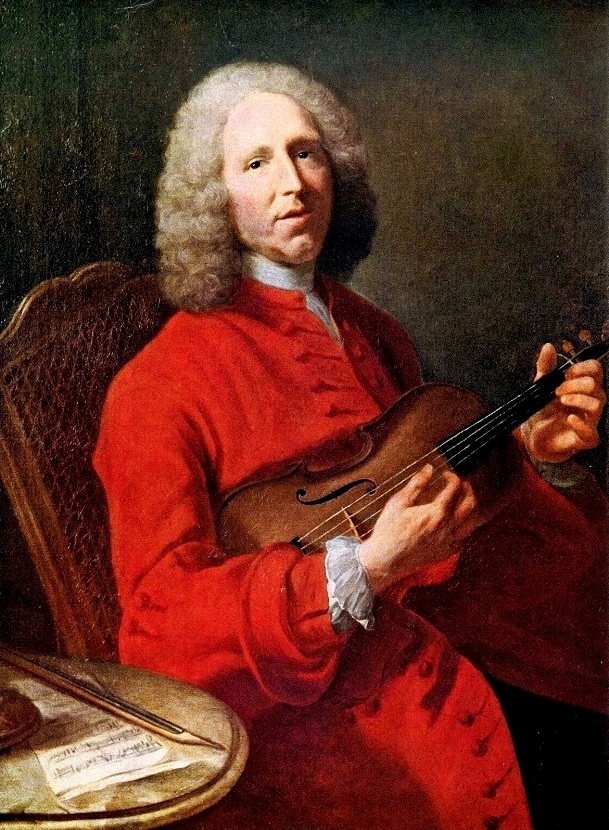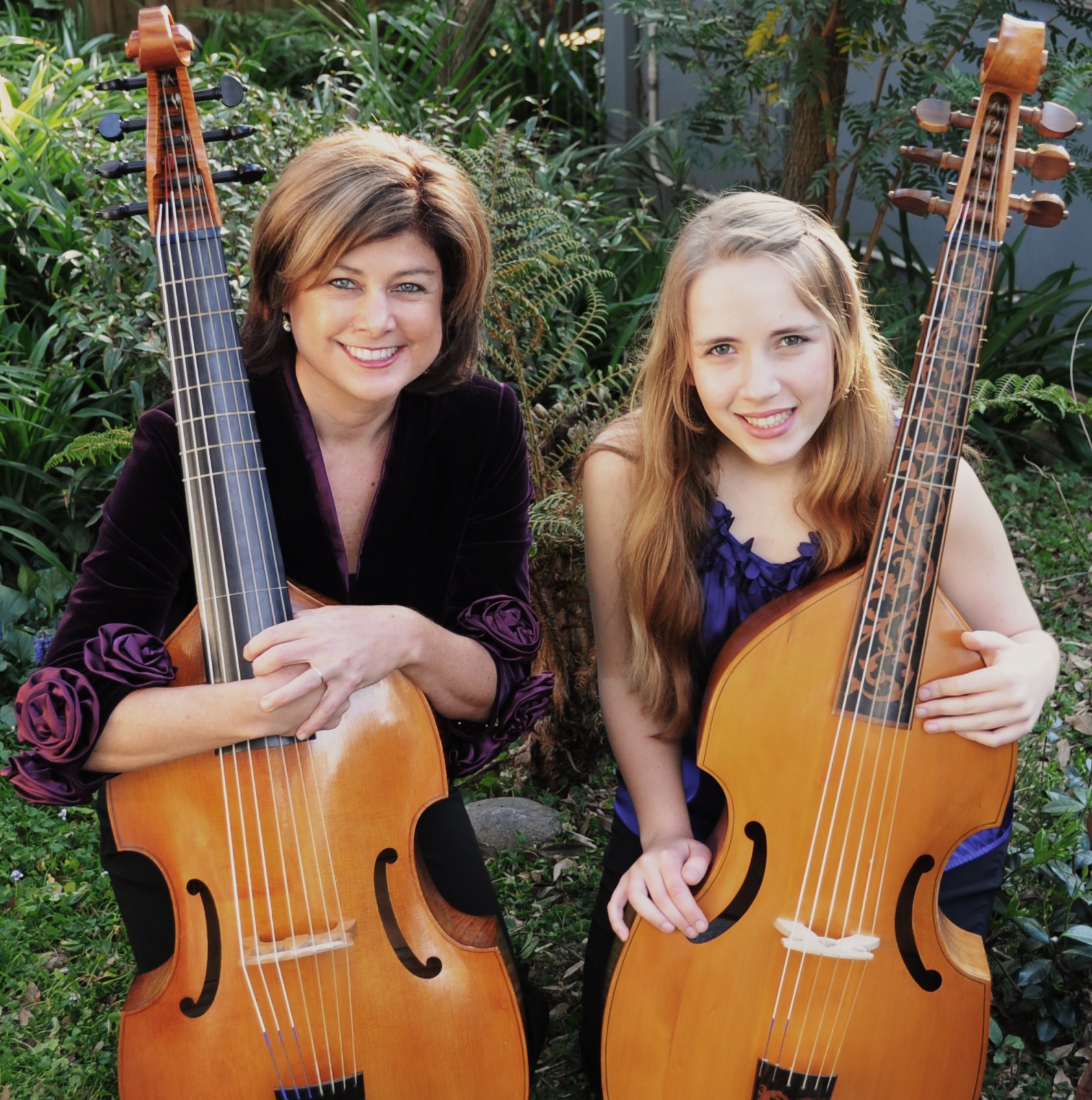 Program
Program
We have been wanting to do this program for years! It took the 250th anniversary of Rameau’s death to make to happen. Below is the program and an overview of Rameau and his work. We hope you can come along!
- Pièces de clavecin en concerts (1741), “Deuxième concert” – Jean-Philippe Rameau (1683 – 1764)
- Cantata “L’Impatience” – Jean-Philippe Rameau
- “Tombeau pour Marais le Cadet” from book V, Pièces de viole 1725 – Marin Marais (1656 – 1728);arranged for 2 viols and continuo by Jennifer Eriksson.
- “Mathematics of Motion” – Alice Chance (1994 – )inspired by the works and philosophies of Jean-Philippe Rameau; world premiere
- Cantata “Thétis” – Jean-Philippe Rameau
Rameau is one of the greats of baroque music yet I heard little or nothing of his music when I was an undergraduate student – although I do remember his treatise on harmony being referred to in passing. Bach, Handel, Vivaldi, Telemann, Purcell and even Lully, the King of French Opera were feted but Jean-Philippe Rameau was all but passed by. Strange for a composer whose 250th anniversary is the subject of celebrations around the world in 2014. At his death the people of France mourned. His funeral in 1764 was attended by more than 1500 people who listened to 180 musicians perform excerpts from his operas. But then some argue that the Anglo Saxon musical world has struggled until recently to fully grasp and admire the treasures of the French baroque as opposed to the better known repertoire of German, Italian and English composers of that same era.
Born in provincial Dijon in 1683, Rameau’s professional life built slowly. It was not until he was almost 40 that his name began to come to the fore. In 1722 he settled permanently in Paris. His harpsichord pieces, cantatas and music for the theatre were by this time were reasonably well known but he was unable to win an organ post in the capital.
Around the time of his move to Paris he published the first of his harmony text books Traité de l’harmonie which brought him to wide attention. Rameau continued to write theoretical treatises until late in his long life and corresponded with famed composers around the world who variously supported and denounced his approach. Even today Rameau’s writings on theory are considered the basis of modern harmony.
The first of Rameau’s operas was not performed until his 50th year. It provoked an immediate negative response from the old guard supporters of the great opera czar, Lully, who at one stage was awarded the sole rights to stage operas in France! A follow up opera Hippolyte et Aricie (1733) was a stunning success, exciting strong passions because of the emphasis placed on music rather than plot.
Rameau was also known for his works for solo harpsichord. Pièces de clavecin avec une méthode sur la mécanique des doigts (1724; “Harpsichord Pieces, with a Method for Fingering”), met with great success, for example. In addition, he composed sophisticated, virtuosic chamber music including Deuxième concert from Pièces de clavecin en concerts (1741) which we will hear today.
Rameau joined the Royal Court during the 1740s, once again, at a relatively late age. He became compositeur de la musique de la chambre du roy in 1745 and composed a comedie-ballet, La princesse de Navarre and Platée for the celebrations of the dauphin’s wedding. He collaborated at times with the renowned and controversial philosopher, Voltaire.
In comparison, little is known of Rameau’s six surviving cantatas or even his librettists. It appears that both cantatas that we feature in this program were written between 1715 and 1720.
Personality-wise, Rameau was considered to be quite an obsessive. It was once written of him – “His heart and soul were in his harpsichord; once he had shut its lid, there was no one home” – a critique that is heard of some modern day harpsichordists! He was reputed to be very frugal, which may have been as much a product of his precarious first decades in the provinces and his struggles to win honour in Paris that a serious character flaw. He was generous in his financial support for several individuals in later life, for example, when his means were more secure.
No single program can do Rameau justice but I hope our offering today opens the door just a little on the man and his beautifully crafted music. I just wish we had done this program years ago!
Jennifer Eriksson
Mathematics of Motion
I know Rameau to have been an extremely adventurous composer, who had an impeccable understanding of harmony – he even wrote a treatise about it – and had a talent to capture and evoke movement in his works. I’m thinking here especially of his ballet music. Works such as the Overture to Pigmaleon, which is as exciting to perform as it is to listen to – and possibly more exciting to dance to – but I would not know. The contrast between the heavy, stately introduction and the vibrant, light, gleefully active vite section is something special.
I have tried to bring about a similar sense of movement to “Mathematics of Motion”, but also the restraint he is famous for. Otherwise, I think the music would be quite Rameauverwhelming!
Alice Chance
Details: 3.00 pm Sunday 25th May
Venue: Recital Hall West, Sydney Conservatorium, Macquarie St, Sydney.
Belinda Montgomery – soprano
David Hidden – baritone
Fiona Ziegler – violin
Tommie Andersson – theorbo
Raymond Harvey – harpsichord
Jennifer Eriksson – viola da gamba
Tickets – $35/20 at door; family ticket $90 (2 adults + 2 children); bookings ph: (02) 9809 5185; on-line at: www.maraisproject.com.au

